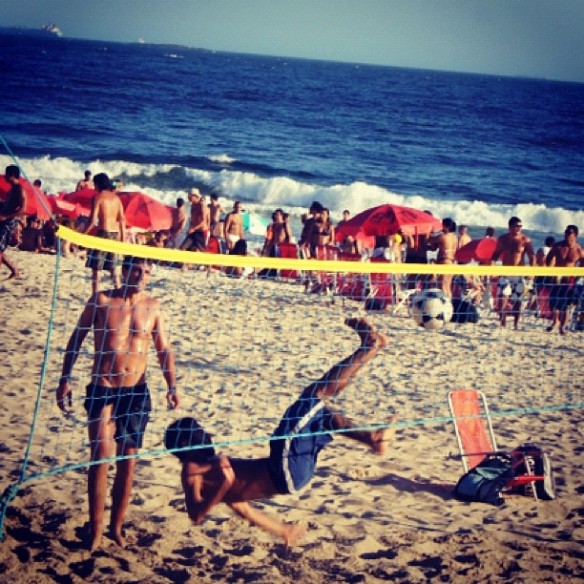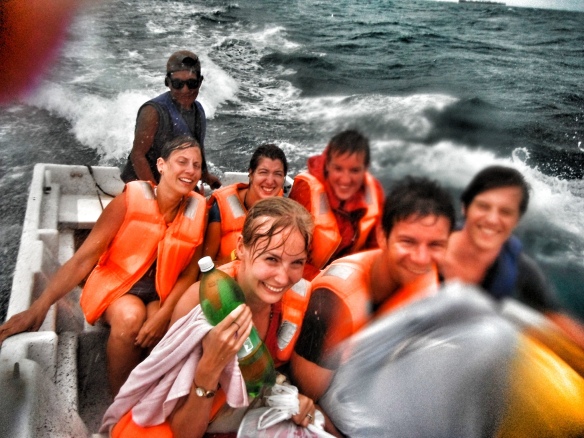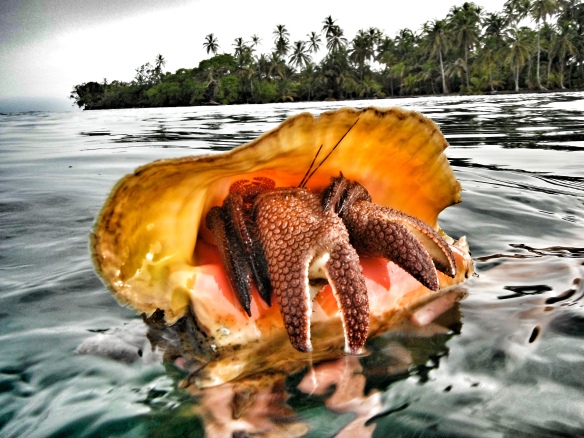After about 8 months of travelling we reached our final country, Brazil. This presented a problem as despite looking very similar in writing, Portuguese is spoken completely differently to Spanish!
Our main reason for visiting Brazil was the lure of Rio de Janeiro and the cheap flight back home however we took in a couple of other places along the way. First a stop in Sao Paulo before stopping in the colonial town of Paraty on the way to Rio.
Our patience for long bus journeys was wearing thin, and the thought of a 16 hour schlep from Foz do Iguacu to Sao Paulo wasn’t attractive so for the first time we booked a one way flight to Sao Paulo. The sun had not even come up as the flight took off, and having spent the night in a tent in the back garden of a hostel to save money we were already wondering if it was such a good idea.
The famed traffic jams of Brazil’s economic capital didn’t help the grogginess as the bus into the city centre crawled along the highway into the centre, I still chuckled upon seeing it was named after Ayrton Senna as we struggled to get over 15 mph at any moment. Several hours after landing we reached our bed for the night, soaked to the skin due to the torrential rain. Despite just 24 hours in the city, a nap was in order!
Fully refreshed and ready to explore we went to check out the city which although not full of sights and attractions is an interesting place to get a feel for modern Brazil. Busy, bustling and fueled by immigrant labour Sao Paulo has a very cosmopolitan feel about it. Our highlight was the Liberdade district, historically the hub of the huge Japanese population in Brazil and now home to many other Asian migrants. A huge Japanese torii or arch marks the entrance to the neighbourhood while street lamps and signs point to a world many miles from Brazil.
Missing Asia a little bit myself we sought out some amazing food, possibly the best Katsu curry I’ve ever tasted and perused the shops and supermarkets, picking up some pork steamed buns we hadn’t seen since Panama. Perfect to cook in the apartment we had booked in our next destination.
That destination was Paraty, a small colonial town by the sea of which we’d heard many good things. Upon our visit we had found it was a national holiday weekend and every hotel and hostel in the town was booked, thankfully we booked the last two available bus tickets the night before and arranged accommodation through Airbnb.
Paraty was supposed to be our relaxing coastal town where we could relax on the beach, top up our tans and chill out before heading home. Unfortunately the torrential rain that was hitting Sao Paulo was also hitting Paraty and the next 5 days were pretty much a washout.
Even so I’m glad we visited Paraty, the old town is incredibly quaint and attractive to wander around without feeling too overcrowded as most of the tourists are domestic. Despite its colonial past the nature of the town felt very different to many colonial towns we’d visited on the other side of the continent in terms of the architecture, the food, sounds and atmosphere of the place.
And then we come to the drinks where Brazil is the home of the caipirinha, a concoction of cachaça (a sugar cane spirit similar to white rum), lime and a lot of sugar. Drinking these from street stalls in the town square in the evening when the rain had calmed will bring a smile to anyone’s face.
Despite the washout, we’d still loved Paraty and made the most of the time to chill out, read, eat (I’ll post my recipe for an incredible chicken parmigiana we had in Paraty on here later), sup cocktails and on our last day we bit the bullet and took a boat trip off the coast on another grey, wet day.
Incredibly we had an awesome trip despite the weather getting to know some Paulistas who were keen on a party whatever the weather! We must have been so out of touch with music while travelling as this was how we were introduced to the infamous Gangnam Style, and I’ll never forget it!
With a touch a sadness but a lot of excitement we boarded our final bus (hooray!) and headed for Rio.
We were told the weather in Rio is usually pretty similar to Paraty and we could expect more rain so we couldn’t be more surprised to arrive in glorious sunshine! We booked a ticket on the last Corcovado train of the day for the Cristo Redentor statue that watches over the city.
This left us time to explore the area around our hostel for a few hours as the queues on earlier trains died down but by the time we returned to the station the fog was rolling in. The statue as I’ve mentioned in a previous blog is amazing up close and the view from the top of the mountain is breathtaking, especially when you can see through the breaks in the cloud!
Thankfully that wasn’t our only chance to take in the views of Rio and does give me the opportunity to bombard by blog with photos of such an amazing city. Just a couple of days later we were heading up Sugar Loaf mountain on the 100 year old cable car to check out the view from there.
Sugar Loaf mountain is perhaps the most striking of the peaks surrounding Rio for its viewpoint over the beaches as it juts out over the Atlantic. From here you can check out the Botofago area and watch the planes coming in and out of the nearby domestic airport. We took a slightly different flight from the helipad halfway up the mountain.
Ever since seeing the Idiot Abroad episode in Rio where Karl comes to see ‘the Jesus thing’ I have wanted to go in a helicopter over the city. With some birthday money from Katrina’s parents towards the cost of the flight we took off from Sugar Loaf Mountain, along the beaches of Copacabana and Ipanema, over the lagoon in the middle of the city and around the Cristo Redentor or ‘Jesus Thing’. I’m lost for words to describe it, but it was incredible and put our flight over the Nazca Lines a few months previously to shame.
After Rio’s views from above we can get to the sights on the ground and for us that was on the beach. We couldn’t have been more keen to get some sun on our backs at the beach and after all Rio is famous for them. Walking down Copacabana one gets the idea how on days off most of the city comes here packed close together to relax, drink caipirinhas, show off their football skills on beach volleyball courts and generally just be cool. I’ve pretty much decided I have to live there at some point in my life!
We spent quite a few afternoons chilling out on Ipanema beach and like to think we found the right spot. Different social scenes choose different parts of the beach, many on Copacabana will consider themselves more working class while there are sectors for the cultural crowd, gay community and very pretty girls on Ipanema, I like to think we found the latter. If you love cities with a cafe culture for people watching, well Rio tops that by a long way! Even the vendors on the beach all have their own fun character selling everything from iced tea (mate) to bikinis and inflatable balls.
Ipanema is also where to congregate to watch one of the great South American sunsets as beachgoers congregate on the rocky headland at the end of the strip to watch the sun go down and even applaud as the last sliver disappears on the horizon.
On our last day on the beach the sea was incredibly rough, leaving it open to only the strongest/bravest/most stupid swimmers. While cooling off I had the awkward British moment of handing a Brazilian girl her bikini top back after she was knocked over by a wave while moments later a rescue helicopter was summoned to fish out some kids who had been caught by the current.
One other place in Rio I need to talk about in this blog is the Escadaria Selaron. These stairs are named after a Chilean artist who started decorating them over a period of about 20 years as a labour of love to the city of Rio. The steps constantly changed over time with new tiles sent from all over the world as the work gained popularity while much of the work was funded through sales of one his favourite paintings. Sadly in January 2013, the creator Jorge Selaron was found dead on these steps and it is not entirely clear it was from natural causes. I hope his work will be taken on by somebody else as the Escadaria Selaron really is a great place to visit in Rio.
So we’ve done the sights and the beaches. Next is the nightlife. We felt we were missing out while we were there despite it not being carnival time as Rio felt a bit quiet at night. To put a stop to this we headed to the Friday night street party in the Lapa District (quite close to the Escadaria Selaron). Around midnight the streets are filled with caipirinha vendors making the biggest, best, strongest and cheapest cocktails you are likely to find in any city – ours were about £1 each for something the size of a pint.
The bars, music, dancers and drink spill onto the streets and gave a great taste of what the city must be like during carnival, a real shame I’m not there as a write my blog!
Shortly after that night and another afternoon on the beach it was time to head to the airport and home with mixed feelings. Great to end to the trip on a high and take some rest from travelling (sounds crazy I know but it is true) but really sad to end what will go down as one of the best experiences of my life.












































































































